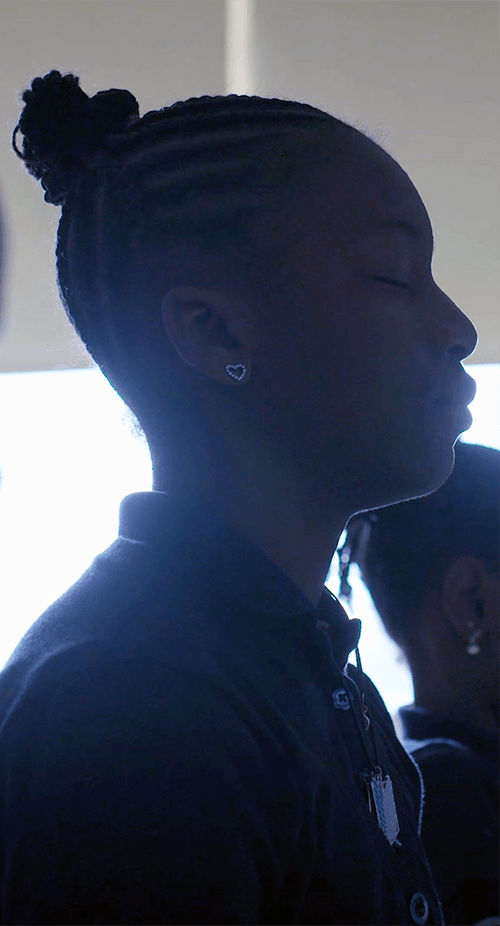Using the Cards
These relatively short and simple exercises can give all students in the class an opportunity to calm and let go of stress. As students develop the ability to calm themselves over time, the stressors that prompt negative feedback should diminish.
The seven exercises can be laminated as a set of cards for teachers. There is no specific order in which the practices should be done. But initially you may wish to introduce them consecutively since the earlier exercises are simpler than the later exercises. Once students are familiar with all seven exercises, you may wish to allow a student to choose which exercise to do each day. Daily practice matters! If it’s a particularly busy day, you may want to do a one-minute exercise. If it’s a high stress day for students, you may want to give them a little more time, or add an exercise before a test or presentation.
It can be challenging to get started because as students enter a classroom they are often noisy and inattentive. A bell or chime can help with the transition. Initially you may need to ring it twice as a signal to quiet down. Then ring once to mark the beginning and end of the exercise.
You may wish to begin the exercises by directing students to sit in their seats (except for Exercise 3—Mind and Motion). As the exercises become familiar, the option of sitting cross-legged on the floor or standing may be added. Read each step, pausing after each prompt to let students engage in the action. How long should you pause? The answer will change over time. As students become more comfortable with silence and deep breathing, you can gradually lengthen the exercises.
You can also project the cards to read them from a smartboard or a screen. We have provided recordings of voices reading the cards (one student and one adult voice) for teachers who prefer this option.
Focus 5 Implementation Suggestions:
Eliminate Distractions:
When some students are distracting, it reduces the benefit of the exercise for the whole class. Suggest that students close their eyes, and emphasize that if they choose not to, they must stay silent as a courtesy to others. In some cases it may help to give a reluctant student the opportunity to lead the exercise.
Frame the Exercises:
Framing the exercise as having benefits for focus, success in school, and well-being may increase student buy-in.
- Refer to the Research Base under the Background tab above or the Focus 5 teacher handout if you would like more information on the benefits of mindfulness.
- Introduce the exercises using the slides or video. These materials include information on how mindfulness can affect parts of the brain. Connect it to how these changes can influence performance in school.
Let Students Lead:
As the year progresses, it is also a good idea to give some students leadership responsibilities and have them lead the exercises. It could also be interesting to try different seating arrangements (e.g., have students sit in a circle, go to a spot in the room that they like, etc.).
- Students could lead exercises if they are struggling to stay focused or distracting other students.
- Trying out different approaches and formats helps make the exercises unique to your classroom.


